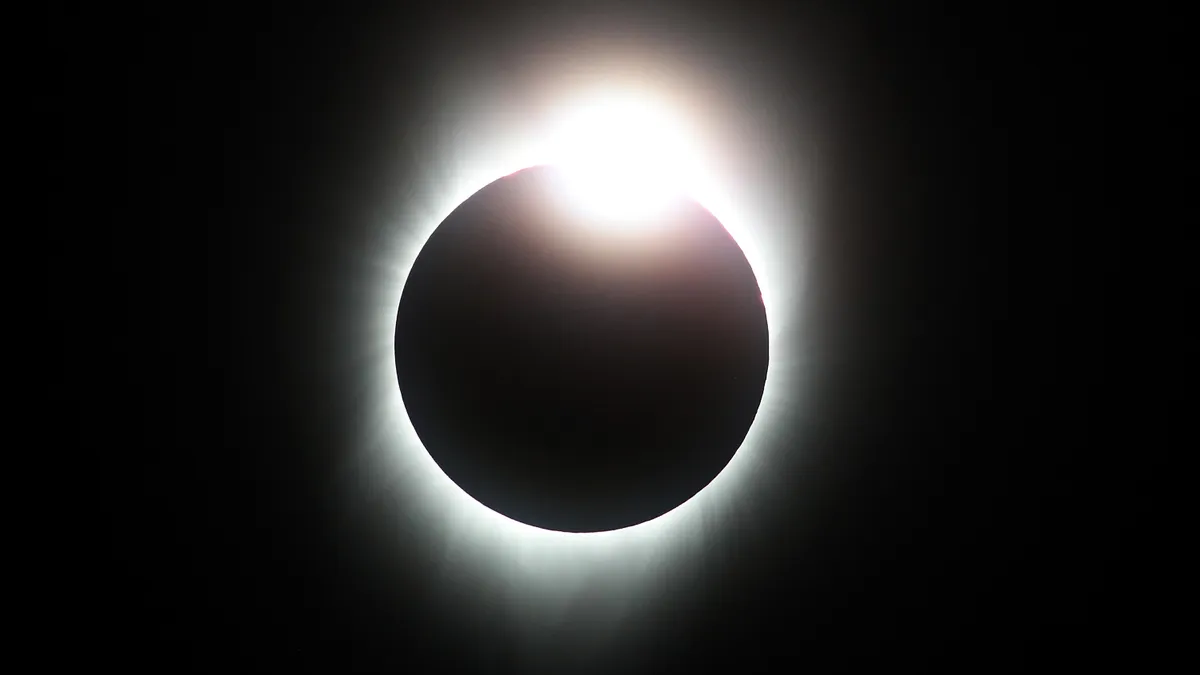As an astronomer, Andrew Fraknoi is particularly excited about the total solar eclipse that will traverse the United States on April 8. Sweeping from the Southwest to the Northeast, the event will put many states and cities into totality — a moment when the moon fully blocks the sun’s light.
For some, this will last more than four minutes. Others will experience shorter periods, or less totality — in which the moon doesn’t fully eclipse the sun.
But Fraknoi, a member of the American Astronomical Society’s Solar Eclipse Task Force, isn’t excited just for astronomy buffs, but for what the event can show students — or frankly anyone — about the predictability and confirmation that science affords. When the sun appears to darken on April 8, learners will have the chance to see the mechanism of how an eclipse works and how science can help explain many other phenomenons in the world around us.
“It’s a remarkable thing that we can understand the cycles of celestial movement sufficiently well that, hundreds of years in advance, we can predict when and where an eclipse will happen to the second. And when we make such a prediction, it’s tested by hordes of scientists,” says Fraknoi, who retired as a professor of astronomy at Foothill College in Los Altos Hills, California.
“It’s a perfect example of how science is an excellent method of getting to understand the world and deserves the respect of citizens."
With the U.S. not set to experience another total solar eclipse until Aug. 23, 2044 — two decades from now — next week’s event provides a rare occasion to weave an eclipse into science lessons as it occurs.
Tapping into natural phenomena
As Fraknoi likes to note, a total solar eclipse is an opportunity to show students how science can leap out of textbooks — and even classrooms — and into their lives. April 8 offers a chance to illustrate how at least one example of scientific theory, orbital motion, occurs in nature.
Certainly, some scientific examples and processes can be demonstrated in a classroom laboratory: Students can see magnetic fields and the power of attraction (and repulsion) at work before their own eyes by working with magnets. And they can learn about acids and bases by putting litmus paper into various liquids, from orange juice to dish soap.
But a solar eclipse is, naturally, a much bigger and rarer phenomena. And it affords students a chance to experience a natural astronomical occurrence by simply walking outside a school’s front door.
“What we’re fond of saying is that this is nature’s laboratory in the sky,” says Fraknoi. “What we’re doing is discussing a topic that is in every state standard, learning about the motion of the moon, sun and, certainly, parts of Earth science. And here is an event usually shown in a textbook, and it’s actually happening in a huge laboratory. It’s really exciting that nature cooperates.”
Linking to the sun’s impact on eye function
Craig Williams agrees that by harnessing the phenomena of the eclipse, educators may interest more students into learning about the event, and science in general. The president of the Hoosier Association of Science Teachers in Indiana says that the details of the eclipse can specifically provide a bridge into biological sciences, especially the biology of the eye.
Before totality, when the sun is completely blocked, rays are still visible. Williams recalls seeing little crescents of light during a partial solar eclipse he experienced as a child in elementary school. And even at 90% totality, sunlight is beaming back to Earth.
It’s not that the eclipse makes the sun’s rays more or less dangerous, as they are always dangerous to the naked eye. The ultraviolet rays emanating from the sun can damage the cornea, the outermost layer of the eye, and can have other long-term health impacts including cataracts and macular degeneration.
To make sure the event is observed safely, Williams will be speaking with educators and students about using the eclipse to talk about the eye as a lens system, and how to observe it without harm.
"In a few seconds, because you’re focusing this intense radiation with the cornea lens system, you’re going to burn up the retina,” says Williams, who is also a physics teacher at Northwestern High School in Kokomo, Indiana. “It’s totally safe when you do it with the right measures. That’s great biology and physics that we can talk about.”
Exploring the sky through physics
At Indiana University in Bloomington, which is right in the center of the path of totality, Rex Tayloe will use the eclipse as a bridge into a scientific field he studies — neutrinos and nuclear physics — through a partnership with Oak Ridge National Laboratory. As a professor of physics, he will open his doors to other educators for an Eclipse 2024 Workshop on April 8, so they can bring what they learn back to their own students.
”The eclipse is not just about observing the corona [the outermost layer of the sun’s atmosphere, visible during an eclipse], there’s a lot of physics and astronomy,” he says.
The last time Bloomington experienced a total solar eclipse was in 1869, Tayloe points out, and so this is providing a once-in-a-lifetime opportunity for people who work, live and visit the area.
One of the day’s talks and demos will be on exoplanets and the use of Doppler shifts — the gravitational pull these planets can exert on a host star — to locate these planets. Then, visitors will hear about neutrinos and cosmic rays and particles coming from outer space. The team will run an experiment to look into whether they can detect a change in cosmic ray rates.
“It’s an opportunity to connect our work there to the eclipse, and how [the event] relates to a lot of areas of science,” Tayloe says.





















